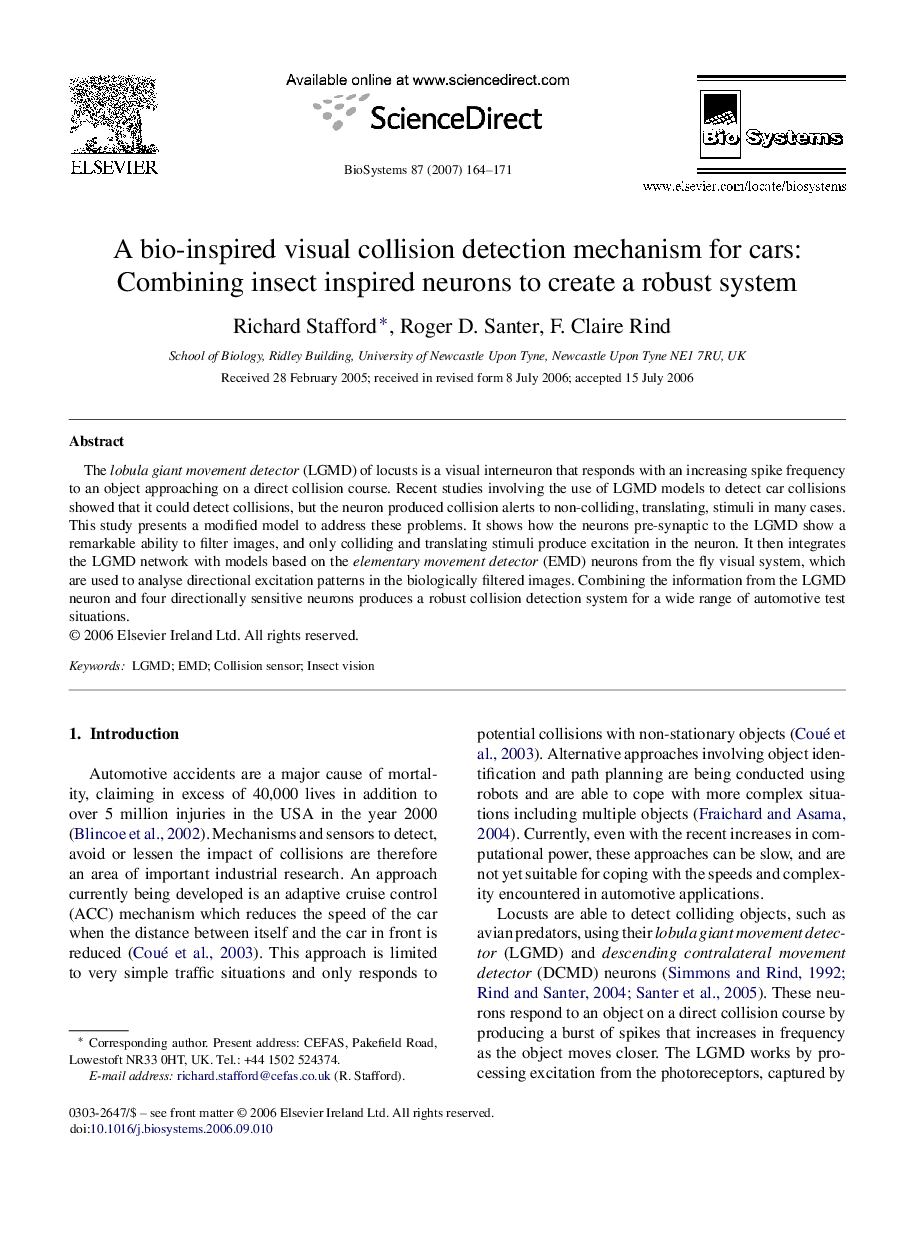| Article ID | Journal | Published Year | Pages | File Type |
|---|---|---|---|---|
| 2076972 | Biosystems | 2007 | 8 Pages |
The lobula giant movement detector (LGMD) of locusts is a visual interneuron that responds with an increasing spike frequency to an object approaching on a direct collision course. Recent studies involving the use of LGMD models to detect car collisions showed that it could detect collisions, but the neuron produced collision alerts to non-colliding, translating, stimuli in many cases. This study presents a modified model to address these problems. It shows how the neurons pre-synaptic to the LGMD show a remarkable ability to filter images, and only colliding and translating stimuli produce excitation in the neuron. It then integrates the LGMD network with models based on the elementary movement detector (EMD) neurons from the fly visual system, which are used to analyse directional excitation patterns in the biologically filtered images. Combining the information from the LGMD neuron and four directionally sensitive neurons produces a robust collision detection system for a wide range of automotive test situations.
